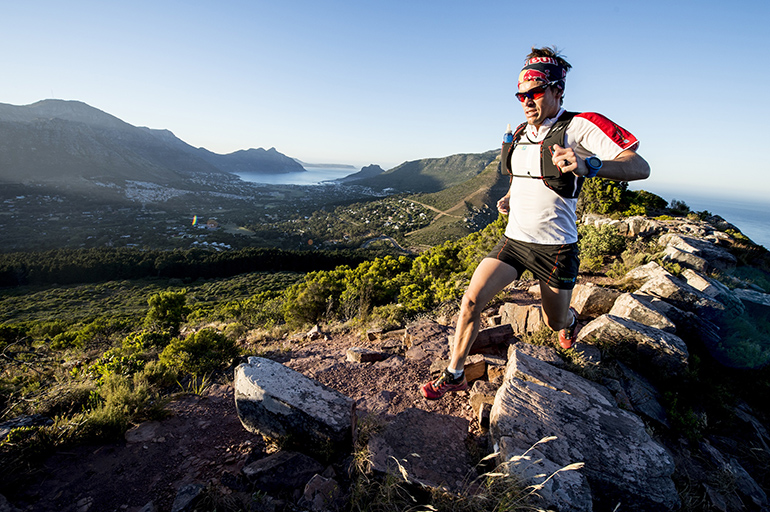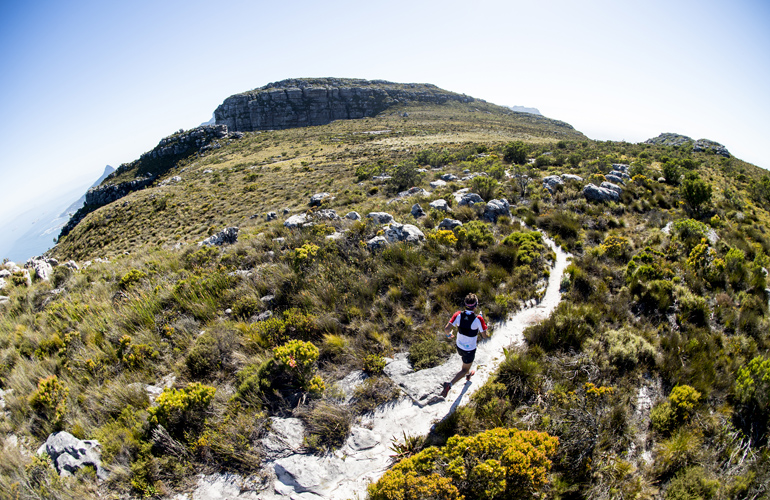From mastering the art of recovery to learning to hike, these are the tips from champion ultra runner Ryan Sandes that will see you through an ultra. This is part one of a three part series. Click here for part two and here for part three.
1. Listen to your body
When you're training for a 100 km race it’s important to have a training schedule, but you must be flexible with it. A lot of ultra runners get hell-bent on achieving their goals, causing them to lose sight of the bigger picture. You really have to listen to your body. If your body is not feeling up to it one week, then back off. If you’re feeling on top of the world, maybe you can do a bit more. Remember, the schedule is a guide only.

“Recovery is more important than running.” ©Craig Kolesky/Red Bull Content Pool
2. Stay mobile
Before I run, I often do 10 to 15 minutes of basic mobility exercises to ensure everything is firing when I start running. It’s important to build basic mobility exercises into your training, even if you only have time for two or three minutes before you start running. Side bridges, basic mountain climbers, bear crawls, A-marches, lunges and ABC drills are all helpful.
3. Better to be under than over trained
Training for an ultra marathon isn’t just about how many kilometers you run each week. I know a lot of guys who came into the sport and for two years did high mileages and won races, but then burned out. If you're new to the sport and you're doing a high mileage, you're really risking injury. For me, I'd rather go to a 100 km race 20 per cent under trained than one per cent over trained.

©Craig Kolesky/Red Bull Content Pool
4. Have an off-season
It’s important to have an off-season. I don't mean taking three months off and doing absolutely nothing! It’s fine to take a month off and just hang out with your friends and have a party or two. But then spend the next two months doing strength work in a gym to prepare yourself for the season ahead. This helps prevent injuries.
5. Hike that long run
When you're trying to build up for an ultra distance trail race, it's important to incorporate hiking into your long runs. It helps you get extra time on your feet. You might start with an hour or two of hiking and then run for two hours afterwards, or hike for an hour, run for an hour.

©Craig Kolesky/Red Bull Content Pool
6. Keep a log
Keep a logbook and write briefly after each run what you did and how you felt so you can look back and see what’s worked and what hasn’t.
7. Spend time on recovery
Recovery is more important than training! It's vital to make sure you're getting enough rest and sleep. If you're working full time then you need to be really careful, as it’s all a lot of stress on the body. Get regular massages, too. Our legs are like car wheels – you might have a Porsche, but if the wheel alignment is out, it's not going to drive well.
Main image: ©Kelvin Trautman / Red Bull Content Pool